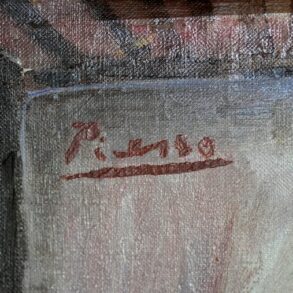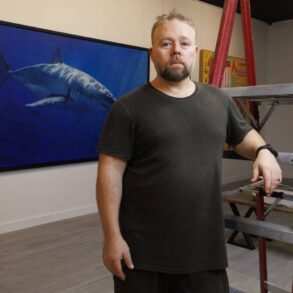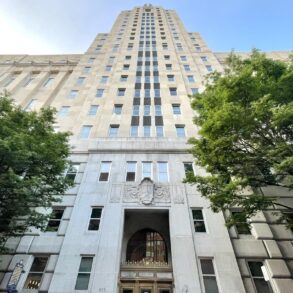Christie’s South Asian Modern and Contemporary Art will have its first non-selling exhibition as part of Asia Week New York’s autumn edition.
The 26 works by Francis Newton Souza come from the collection of gallerist Navin Kumar and focus on an 18-year-period when the Indian modern artist was based in London. The exhibition of paintings and works on paper will take place at Christie’s New York headquarters from September 13 to 18.
“We just saw the response to Souza in March,” Nishad Avari, the New York–based head of Christie’s South Asian modern and contemporary art department told ARTnews, in reference to the strong results and new auction record for the artist, set in March at $4.9 million. “We just thought, you know, there’s an appetite for people to see works of high quality, and that sort of has a knock-on effect on the market as well.”
Many of the works have not been seen in public for more than five decades, and were collected by Kumar over more than 30 years. “This was a fantastic collection in New York that’s really been under the radar, and it’s, an honor to bring a selection of works from this collection out for people to see alongside Asian Art Week,” Avari said, noting Kumar’s intention is to share the work with an audience beyond the one he could have access on his own.
Kumar’s professional relationship with Christie’s goes back to initial purchases with the auction house in the 1980s, and Avari pointed out Kumar was one of the first gallerists for Indian art in the United States. “He came to the US in the early 1970s and has really been promoter of both classical and contemporary South Asian art since then,” Avari said. “We want to bring that to the fore and sort of show people how entrenched the history of South Asian modern art is in the United States and North America. And not that it’s just a recent phenomenon.”
Among the works in the non-selling exhibition are The Martyr, a painting from 1950 produced within a year after Souza moved to London and while he was very poor. Kumar purchased the nude work from Christie’s more than 20 years ago. “Navin was supporting our market when very few other people were supporting it,” Avari said. “Just seeing old works like that, which I’ve only seen in catalogs in the past, was a real thrill.”
“There are some that haven’t been seen for half a century so publicly. So it really is an exciting moment.”
In the context of Souza’s career, Paris Landscape in the Spring (1956) was painted by the artist the year he met his most important patron, an American businessman named Harold Kover. Kover’s business relationship with Souza included a monthly stipend for approximately four years as well as a regular supply of paintings. “This was what finally gave him the financial stability to embark on some of his most ambitious works in the late 1950s,” Avari said.
Other works in the non-selling exhibition at Christie’s were shown at British art dealer Victor Musgrave’s Gallery One in London between 1955 and 1964. Gallery One became known for its exhibits of South Asian modernists and Souza’s experience of showing there literally changed the artist’s life. “It’s the reason he continued to stay in London,” Avari said. “It’s the reason he was brought to international attention, so to have works from those exhibitions from that 10-year-period at Gallery One is pretty exciting in this show.”
The South Asian Modern and Contemporary Art department’s auction on September 18 will also feature several Souza works, including Resurrected Christ (1962) with an estimate of $600,000 to $800,000 and Still Life with Relics with an estimate of $180,000 to $250,000. “Several of the works in the auction are actually from the same exhibitions that sort of have contributed to works in the [non-selling] exhibition,” Avari said, noting Still Life with Relics and a large nude in the non-selling exhibition were both shown at Gallery One in 1956. “You’re not walking more than a couple of steps to see other examples that sort of broaden your view.”
This post was originally published on this site be sure to check out more of their content








